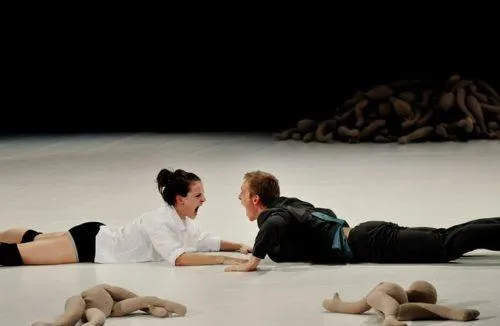
A New Conflict Dance
How to become a conscious participant in your interactions with others.
How can I begin anything new with all of yesterday in me?
~ Leonard Cohen
We all have automatic behaviors…those tasks we perform unconsciously with very little thought. This morning proves it. I’m sure that most of you reading this article go through the exact same routine every morning from the moment your toes touch the floor until you’re done with your first cup of coffee. It’s your practiced morning dance routine that you’ve been doing your entire life.
Much depends on our automatic behaviors. After all, there’s no need to occupy our conscious minds with repetitive tasks. Our automatic behaviors can make us more efficient going about our routines. But these behaviors are not always productive and, when it comes to conflict, they can be downright destructive. You see, we all have automatic reactions to stress and conflict that can actually make a conflict worse, not better. If you don’t believe me, read on…
Be honest with yourself. If, during a fight, you talk over your spouse or coworker, admit it, you’ve reacted the same way with others throughout your life. If you’re the type that withdraws and gets quiet during an argument you’ve always done it. Get the point? This is the reason why most married couples can complete the other’s sentences…and can finish each other’s arguments. Whatever your response to conflict, it’s the same dance routine, practiced over and over with little variation.
Here’s why these automatic behaviors are a problem. When in “automatic mode”, your brain is unconsciously organizing what’s happening in front of you in a predetermined pattern. While your mind is busy in this task, you’re not fully aware of the other person’s concerns. Meanwhile, the other person may also be reacting in a similar fashion. This creates what I call the “conflict dance”, where two people in an argument are simply following their built-in, internal scripts of how they have dealt with conflict during their entire lives. It’s like two people dancing near one another but not dancing with one another. Both are simply too busy re-running their predetermined unconscious, internal conflict pattern without connecting or seeking to understand the other.
Those of us in the conflict resolution profession engage in extensive training to identify our own automatic behaviors and to learn how to circumvent them when working with the conflict of others; after all, if we can’t rise beyond our own unconscious reactions to conflict, we will miss what is happening in front of us and we will be ineffective in helping others.
The good news is that we can overcome these behaviors and have more conscious, conflict-free interactions with others, but to do so, we must become more self-aware of our role in conflict. By performing the following exercises, you can rise above your programming. These can be performed individually or, to be more effective, you can invite others to participate with you.
Perform an “automatic behavior” inventory: Individually, write down how you perceive your response to conflict. Are you someone who withdraws? Attacks? Raises your voice? Talks over others? Gets defensive? Has to always be right? What do you say and do when things get heated? You know who you are. Be honest with yourself.
Share your insights: Get together and talk about it. Recently, I joined with an international group of mediators, facilitators and stakeholder engagement specialists to create a stakeholder engagement organization. This group will have to work very closely on large projects. Each of us shared our personality profiles and we each shared how we act when under stress. As a result, for example, I now consciously understand that I should not take it personally if a member of the group gets quiet and needs to step away from the group to organize his thoughts. It is simply a personality trait and an identified automatic behavior that should not be misinterpreted.
Create an “Inner Observer” and become self-aware: Helen Palmer, Ph.D., a best-selling author of five works in the human consciousness sector and presenter at the Harvard Program on Negotiation, suggests that we create an “inner observer”, a fictional “mini-me”, who will continually remind you when you are beginning to engage in your self- identified automatic behaviors. This exercise, though challenging, will enhance your self-awareness and will allow you to transcend your initial reactions and remain a conscious participant in your interactions with others.
Be Compassionate: Always remember that other’s reactions may also be automatic and that what you are hearing may not be a fully thought-out response. Be forgiving, and when you can see beyond the initial reaction, you will be more likely able to refrain from escalating the interaction with your own reactions. Compassion and understanding should remain in the forefront of your thinking… – always.
Yes, you can learn to dance with each other in times of disagreement! These exercises create great self-awareness that grant us the gift of being fully present in difficult moments. Being conscious of your reactions and those of others is the key to breaking the cycle of conflict created by automatic, ingrained responses. So, as Rumi said, “Dance, when you’re broken open, Dance, if you’ve torn the bandage off. Dance in the middle of fighting. Dance in your blood. Dance when you’re perfectly free”. And I would add, dance consciously.
About
Resources
Locations
Contact Us
Website Terms & Conditions - Privacy Policy
Copyright © 2026 Law Offices of Jeffrey M. Cohen, Esq. All Rights Reserved.
Website design by Chesterfield Advantage.
